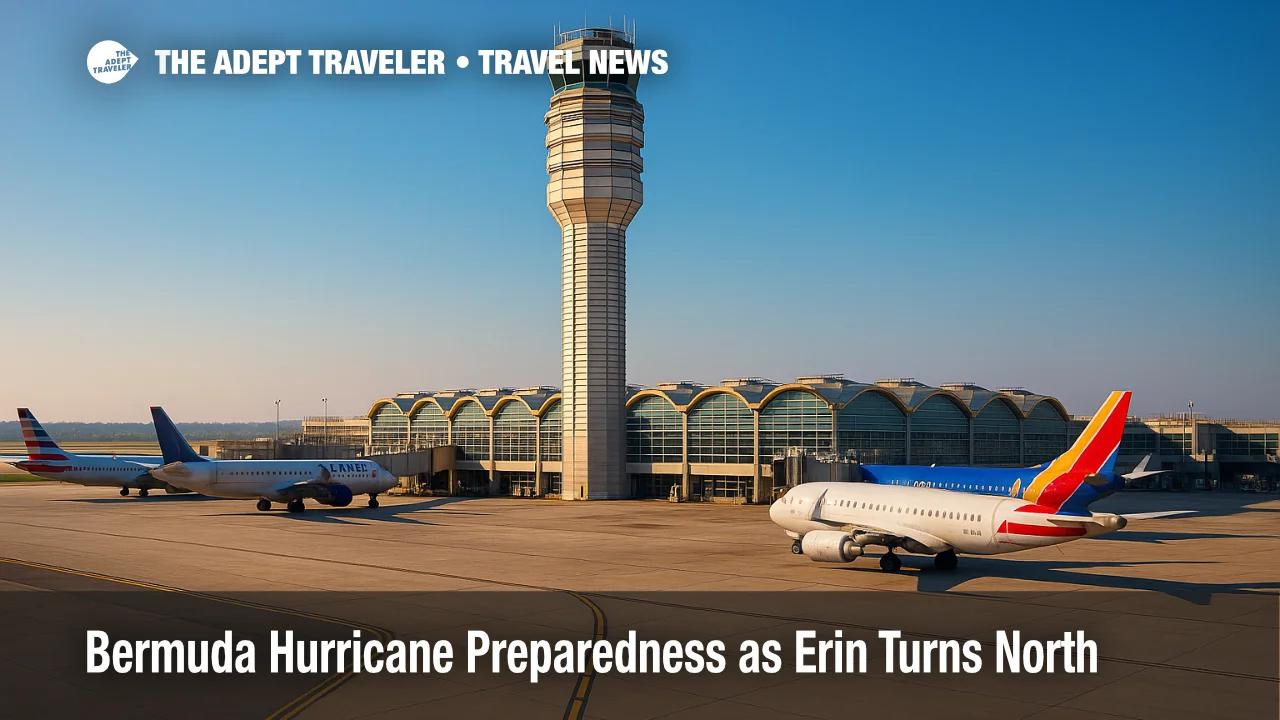Reagan National fire alarm halts flights in D.C.

Flights at Ronald Reagan Washington National Airport (DCA) were stopped late morning on August 18 after a fire alarm triggered an evacuation of the air traffic control tower. The Federal Aviation Administration said no fire was found, and the tower returned to full operation by noon. Departures and arrivals resumed, but delays persisted into the afternoon as the airport worked through the backlog.
Key Points
- Why it matters: A brief tower evacuation can ripple across tightly scheduled East Coast airspace.
- Travel impact: Flights paused from 10:45 a.m. to noon, with residual delays into the evening.
- What's next: FAA ground delay programs help meter arrivals; check airline apps for rebooking.
- Status: FAA reported no fire, cause of the alarm not disclosed.
Snapshot
The two hour halt began around 10:45 a.m., when a fire alarm forced controllers to clear the tower at Ronald Reagan Washington National Airport. The FAA confirmed there was no fire and restored full services at noon, but the pause created a queue of aircraft awaiting departure and arrival slots. By late afternoon, the national operations plan showed a Ground Delay Program for DCA to meter inbound traffic as thunderstorms and volume compounded recovery. Travelers were advised to monitor airline alerts, allow extra time, and consider same day standby options.
Background
Reagan National's airspace is unusually constrained, bounded by the Potomac River corridor, restricted zones over the nation's capital, and heavy helicopter activity. Safety scrutiny has intensified this year following a fatal January 29 collision between a commercial aircraft and a military helicopter in the D.C. area, which led the FAA to tighten rules on how controllers separate mixed traffic near DCA. After a police helicopter search caused delays on August 3, controllers at National were also instructed to avoid prioritizing law enforcement missions over scheduled airline traffic, with exceptions for presidential movements.
Latest Developments
FAA confirms no fire, tower back online at noon
In statements carried by local outlets, the FAA said a fire alarm activated in the tower, prompting a temporary stop for all traffic at Reagan National. Officials reported the tower was fully operational by noon, allowing flights to resume, although midafternoon delays averaged more than 30 minutes. The agency did not immediately identify the cause of the alarm.
Residual delays managed through evening programs
To absorb the backlog, the Air Traffic Control System Command Center listed a Ground Delay Program for DCA into the evening hours on August 18. These programs space arrivals into the airport to match available capacity, which typically smooths operations but can extend connection times and push some departures later than scheduled.
Analysis
A short evacuation at a high density tower highlights how little slack exists in the National Capital Region. DCA runs with fine margins because traffic must thread an obstacle rich corridor while complying with security driven routing. When the tower goes offline, even briefly, the immediate result is a ground stop and a surge of holding patterns or taxi queues that can take hours to unwind. The FAA has leaned more on demand management tools this summer, from targeted ground delay programs to route restrictions, to preserve safety in busy airspace.
Policy context matters. The agency has moved to meter traffic more conservatively in complex metro areas and to apply schedule relief when staffing or construction tighten capacity, most visibly at Newark Liberty International Airport. For travelers, the near term playbook remains the same, pad connections, accept that late day banks are more fragile, and stay glued to airline rebooking channels. Longer term, the system gains reliability from staffing up facilities, refreshing life expired infrastructure, and keeping schedules aligned with what ATC can safely move during weather and peak periods, a direction reflected in broader FAA initiatives and recent operating limitations. For now, DCA's swift recovery after the fire alarm shows the safety net worked as designed, even if delays lingered through the evening.
Final Thoughts
Monday's disruption at Ronald Reagan Washington National Airport underscores a familiar reality, even a brief tower evacuation can ripple across one of the nation's most complex airspace systems. The FAA's quick return to service, paired with arrival metering, limited a longer meltdown while keeping safety at the center. As summer storms and heavy demand continue, expect more tactical flow programs and keep plans flexible. The episode will likely feed ongoing debates about staffing and modernization, but it ultimately reads as a contained systems check, not a systemic failure, during the Reagan National fire alarm.
Sources
- Flights resumed at Reagan airport in D.C. area after fire alarm in the tower halted all traffic, Associated Press
- Flights resumed at Reagan airport in D.C. area after fire alarm in the tower halted all traffic, WTOP
- Current Operations Plan Advisory, FAA ATCSCC
- Kidnapping search near DCA delayed flights. Now police choppers have to wait., The Washington Post
- National Airspace System Status, FAA
- Staffing-Related Relief Concerning Operations at DCA, JFK, and LGA, Federal Register
